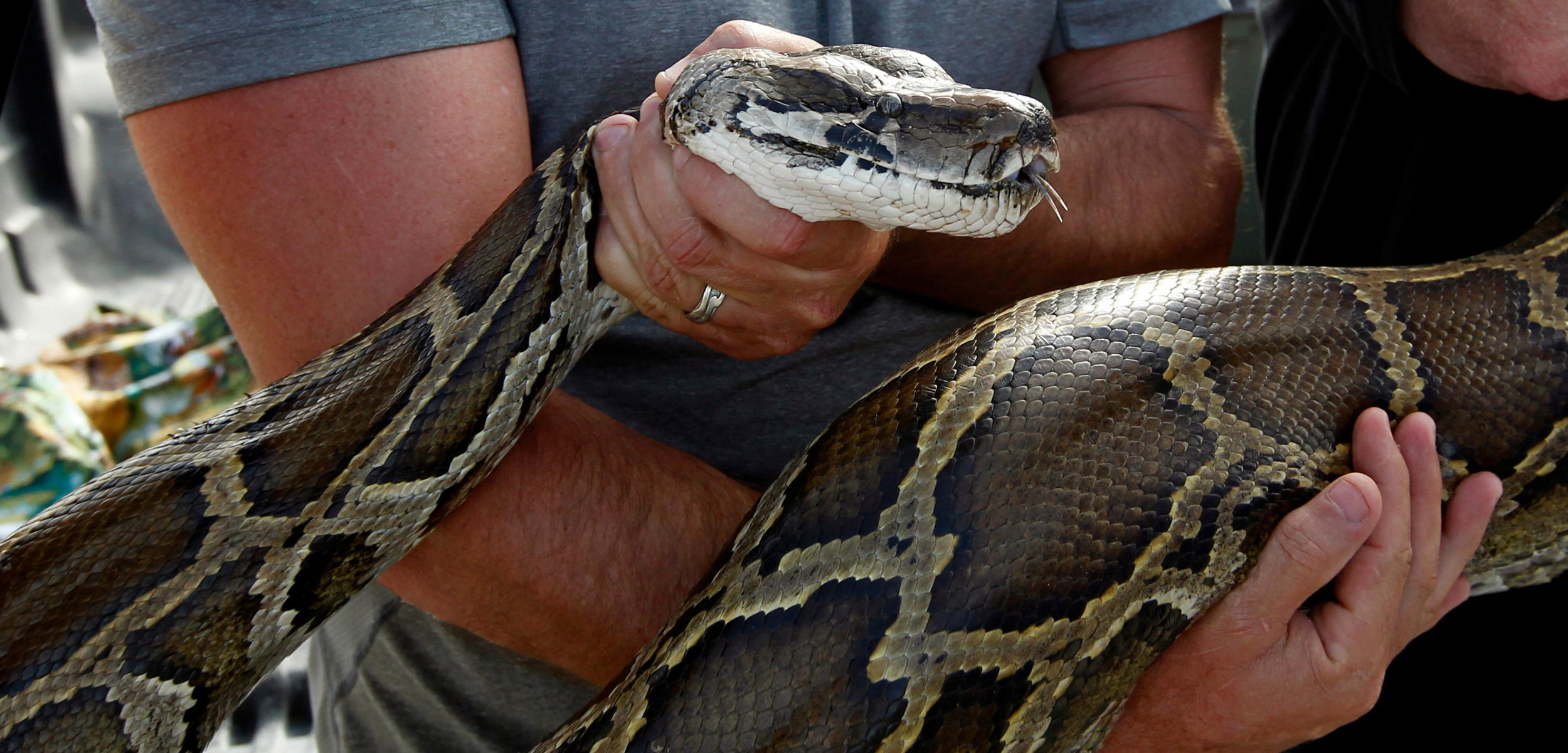The Effects of Invasive Pythons Slither through the Everglades
Pythons may be setting off a cascade of ecosystem changes.
Article body copy
The huge Burmese pythons that are slowly taking over Florida’s Everglades wetlands are a threat to the mammals that live there. But new research shows the pythons’ influence extends far beyond their own appetites: the snakes are setting off cascading changes to the ecosystem.
The first pythons are thought to have arrived in the Everglades decades ago, likely as escaped or abandoned pets, says John Willson, a herpetologist at the University of Arkansas, and their descendants have been gorging themselves ever since. Around the year 2000, it became clear the slithering hunters were having a devastating effect on native mammals.
“The southern Everglades have seen an almost complete disappearance of raccoons, opossums, rabbits, deer, and bobcats,” says Willson.
With ecosystems being so interconnected, Willson wondered what trickle-down effects this wholesale loss of mammals might be having on the wider Everglades. Turtle eggs are a favorite food of raccoons and opossums, for instance, so Willson wondered if turtles were benefiting from the python-led slaughter?
Willson set up artificial turtle nests in areas where pythons had been long established, as well as in locations where the snakes were recent invaders and in spots with few or no pythons. As he expected, the more snakes in an area, the fewer turtle eggs consumed by mammals.
The snakes’ invasion, then, may be good news for the Everglades’ turtles, possibly including some endangered sea turtle species. But Willson sees a more troubling picture: “It suggests the pythons don’t just affect the things they’re preying on, they’re affecting other components of the food web in ways that could cascade through the ecosystem and cause major changes.”
And those changes could be more important, and difficult to measure, than egg survival, he adds.
The mammals that are disappearing play a variety of different ecological roles, and their loss could be affecting everything from nutrient cycling to vegetation cover. “Changes in vegetation can completely change an ecosystem,” Willson says.
These sorts of knock-on effects, called “trophic cascades,” have been seen before, such as when wolves were reintroduced to Yellowstone National Park. The wolves reduced the elk populations, but they also changed how and where the elk fed, which altered the park’s vegetation.
But Richard Engeman, a biologist at the US Department of Agriculture’s National Wildlife Research Center, cautions against over-interpreting the results of a single study. He says the new study only shows a correlation between turtles, mammals, and pythons—not direct cause and effect.
“The pythons are definitely having an effect, but to really validate it, you need to know what the mammal populations were before the pythons showed up,” says Engeman. “It may be too late for that, so a body of many more of these correlative studies may provide greater insight.”
Untangling the assorted variables in trophic cascades can be fiendishly difficult, he adds, even in a case as well studied as the Yellowstone wolves. Around the same time the wolves were reintroduced, grizzly bear numbers were also on the rise, and they also prey on elk calves. “All of this is going on at the same time, so it is really hard to say what is the cause and effect,” he says.
Willson agrees that there is much more work to be done to understand the full effects of the invasive pythons. He plans to begin studying the mechanisms behind the possible indirect effects to learn how the Everglades landscape might change in response to its slithery invaders.

